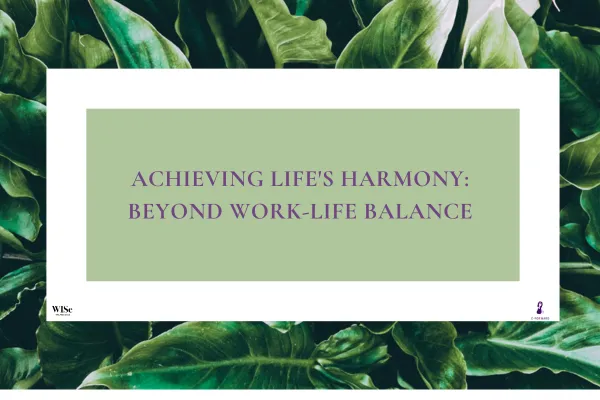
Achieving Life's Harmony: Beyond Work-Life Balance

For too long, we've been confined by the notion of "work-life balance," a concept that suggests a strict separation between professional and personal spheres. This outdated framework often leads to an unsustainable existence, driving individuals toward burnout. The true path to sustainable well-being and success lies not in separation, but in integration—discovering harmony between all aspects of your life. This paradigm shift acknowledges that life is a dynamic interplay where all elements can, and should, coexist fluidly.
True well-being and sustainable success come from integrating work and life into a cohesive harmony, rather than attempting to balance them as separate entities.
Open communication with loved ones about professional demands transforms potential conflict into support, making family members allies in your career journey.
Recognizing and honoring all eight pillars of wellness—including occupational and financial—allows for a holistic approach to well-being, understanding that fluctuations are natural and part of an evolving harmony.
Initially, a disciplined adherence to separating work and private life might seem effective, as it was for one individual who experienced career progression for a decade. However, ascending to a demanding role, such as a General Manager in an emerging market, revealed the inadequacy of this separation. When all significant decisions began to centralize, attempting to compartmentalize responsibilities became unsustainable, signaling an imminent burnout. The pivotal shift occurred through open communication with family, explaining work demands in relatable terms, such as exam preparation. This transparency transformed them into enthusiastic supporters, illuminating the path to a lighter, more harmonious existence. This realization underscored that splitting life into equal, separate portions is an illusion that inevitably leads to burnout.
The concept of harmony extends beyond individual well-being to impact all relationships and endeavors. This approach can be seen evolving into a partnership that builds businesses and defines future goals, even incorporating the next generation. This holistic view resonates with the eight pillars of wellness, a comprehensive model that includes occupational and financial wellness alongside mental and emotional health. Many overlook how interconnected these pillars are; for instance, financial well-being directly influences access to healthy lifestyle choices. Embracing the idea that all pillars work in harmony, acknowledging that some may be prioritized over others depending on life's seasons, is crucial for continuous evolution and iteration towards overall well-being. Self-reflection on these pillars often reveals that full integration is indeed the ultimate outcome of a harmonious life.
This integrated approach offers significant benefits for everyone, including men who often find themselves missing out on family and personal life due to intense career focus. By recognizing their values and allowing them to drive decisions, men too can invest more deeply in their families and relationships. When core values, like achievement, merge with family life, children can understand and appreciate the importance of a parent's work, fostering fulfillment rather than resentment. Life is dynamic, and sometimes parts of it may fall out of harmony; the key is to recognize this imbalance and work towards realigning, acknowledging that such adjustments are a natural part of life's continuous flow.
Sign up for the FREE Audacity in Leadership and Career Acceleration course now to gain access to our conversation and over 10 tools to help you succeed: https://bit.ly/AudacityInLeadershipCourseSignUp
